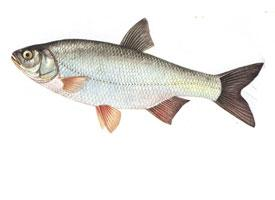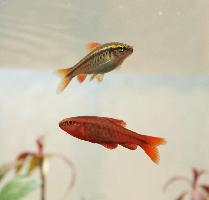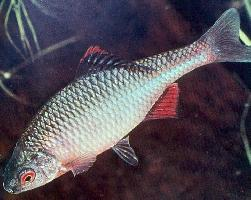
Váhy a míry
| Délka | 60 cm |
|---|---|
| Hmotnost | 3 kg |
Biologická data
| Délka života | 20 r |
|---|
Popis zvířete
The Common nase, scientifically known as Chondrostoma nasus, is a fascinating species of freshwater fish belonging to the Cyprinidae family, which includes carps and minnows. This species is primarily found in the fast-flowing, clear waters of rivers and streams across Europe, from the Loire River in France to the Volga River basin in Russia, demonstrating a wide geographical distribution that reflects its adaptability to various freshwater habitats.Characterized by its elongated, torpedo-shaped body, the Common nase can grow up to lengths of about 40 to 50 centimeters, although some specimens have been reported to reach up to 60 centimeters. The body of this fish is covered in large, silvery scales that shimmer beautifully under the water, making it a sight to behold in its natural environment. One of the most distinctive features of the Common nase is its mouth structure. The fish has a protruding, downward-facing mouth with thick lips, which is specially adapted for scraping algae and biofilm off rocks and other surfaces, making it a key species for controlling aquatic vegetation and maintaining healthy river ecosystems.
The dorsal and anal fins of the Common nase are relatively short and positioned far back on the body, closer to the tail, which is forked and aids in its swift, agile movements through fast-flowing waters. This streamlined body shape and powerful tail fin enable the Common nase to resist strong currents, making it an excellent swimmer.
In terms of behavior, the Common nase is known for its migratory habits. During the spawning season, which typically occurs in the spring, these fish undertake upstream migrations to reach suitable gravelly or sandy areas where they can lay their eggs. This reproductive strategy ensures that their offspring are born in areas with abundant food sources and less predation, increasing their chances of survival.
The diet of the Common nase primarily consists of algae, detritus, and small invertebrates, which it grazes from the riverbed. This feeding behavior is not only crucial for the fish's survival but also plays a significant role in the ecosystem by controlling algae growth and contributing to the cycling of nutrients.
Unfortunately, like many freshwater species, the Common nase faces threats from habitat destruction, pollution, and river regulation, which have led to declines in some of its populations. Conservation efforts are underway in several countries to protect its habitat and ensure the survival of this unique and ecologically important species.
In summary, the Common nase (Chondrostoma nasus) is a remarkable freshwater fish known for its distinctive mouth, sleek body, and migratory behavior. As an integral part of European river ecosystems, it contributes to the health and balance of these aquatic environments, highlighting the importance of preserving its natural habitats for future generations.
Podobná zvířata
Nové fotografie zvířat
Top 10 zvířat
- Dolphin gull (Leucophaeus scoresbii)
- Diana monkey (Cercopithecus diana)
- Stone loach (Barbatula barbatula)
- Greek tortoise (Testudo graeca)
- Japanese macaque (Macaca fuscata)
- Moustached guenon (Cercopithecus cephus)
- Galápagos tortoise (Geochelone nigra complex)
- Russian tortoise (Testudo horsfieldii)
- Galápagos penguin (Spheniscus mendiculus)
- Common flying dragon (Draco volans)


